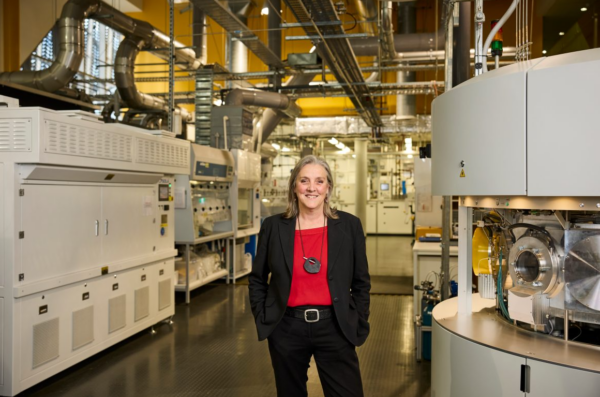University of NSW Professor Renate Egan says current solar technology should be deployed as fast as it can, but to achieve 100% renewable energy grid by the middle of the century, more ‘blue-sky’ solar thinking is required.
Egan, executive director of the Australian Centre for Advanced Photovoltaics, said while traditional panels and batteries will remain relevant, she expects the next 20 years to deliver significant development in PV technology, predicting solar energy will also be sourced through new, under-development technologies such as thin flexible films, windows, and paint.
“When people talk about solar paint, they are describing solar as a technology that will be everywhere,” she said.
Egan said to help Australia achieve net zero by 2050, the solar industry needs to see sustained growth, up from 20% of today’s electricity demand being met by solar to 40% by 2030.
“By 2050 we will be looking at 100% renewables and we would expect over 50% of that to come from solar but our electricity needs are also going to grow because we need to electrify everything,” she said.
“So, all of our thermal processes, where we rely on gas, and all our transport processes, where we rely on fuel, will be switching to electric, so it’s important to communicate how quickly the solar industry is growing because we are going to see so much change in the next 20 years.”
Solar windows, flexible film and solar paint are three technologies currently under development which Egan suggests will eventually move into the mainstream.
“One such change may well come from solar glass panels that are see-through and can act like a window, which are already being produced in both the U.S. and Europe and though less efficient than traditional PV panels, the potential to turn entire skyscrapers, for example, into a whole building that can generate its own electricity is inspiring,” Egan said.

Image: UNSW/Richard Freeman
Speaking as a guest on UNSW’s Engineering the Future podcast series, Egan also flagged work being done in Australia on PV film that can be printed and attached to suitable surfaces.
“At the CSIRO in Melbourne and a group in the University of Newcastle, we are actually now producing a thin film roll-to-roll printing process, that’s a bit like the way bank notes are printed, on a flexible polymer backing; you can print materials that you can turn into solar cells. And, you can imagine hanging solar canopies, flexible solar arrays on various surfaces,” she said.
“And the concept of solar paint, I think, translates to these thin film flexible panels.”
Egan also pointed to progress with tandem solar cell technologies, currently being researched to increase efficiencies of solar panels, to increase light absorption.
“There are gaps in sunlight that silicon can’t access, so we want to add another cell on top that will absorb the light that the silicon is missing,” she said. “We call that a tandem structure, two cells, one on top of the other and we’re working on the materials that make up the new top cell.”
This content is protected by copyright and may not be reused. If you want to cooperate with us and would like to reuse some of our content, please contact: editors@pv-magazine.com.








By submitting this form you agree to pv magazine using your data for the purposes of publishing your comment.
Your personal data will only be disclosed or otherwise transmitted to third parties for the purposes of spam filtering or if this is necessary for technical maintenance of the website. Any other transfer to third parties will not take place unless this is justified on the basis of applicable data protection regulations or if pv magazine is legally obliged to do so.
You may revoke this consent at any time with effect for the future, in which case your personal data will be deleted immediately. Otherwise, your data will be deleted if pv magazine has processed your request or the purpose of data storage is fulfilled.
Further information on data privacy can be found in our Data Protection Policy.